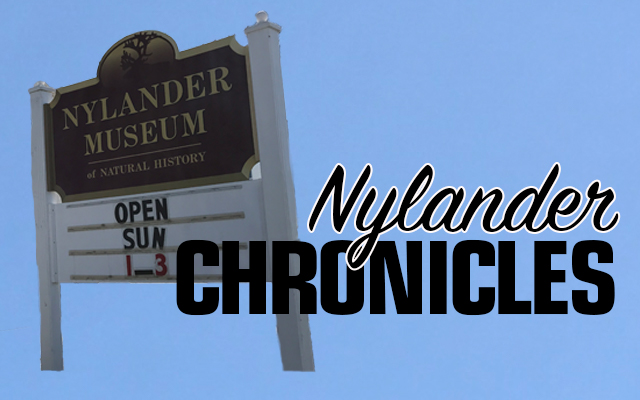In honor of the Nylander Museum of Natural History’s theme week titled “Bugging You,” which will cover all sorts of insects from July 15 to 27, we present some fascinating facts about one of the most important, and currently threatened, insects in the United States: bees.
Bees are crucial to both the environment and to our food supply. While we rely on them for many of our favorite crops, we have done little in terms of protecting bees and encouraging them to thrive.
There are about 4,000 bee species in the United States. Of those, 276 reside in Maine alone. Species in Maine include carpenter bees, cuckoo, leafcutter, mason, sweat, plasterer, yellow-faced, miner and sand bees. The most recognizable, however, are the common honey bee and bumblebee. There are 17 species of bumblebee in Maine. They are one of the larger bee species, growing up to .9 inches long. They are also covered in very fine hair and have delicate, yet strong wings. Bumblebees are also well known for their coloring, which is often yellow, white, and with black bands.
Bumblebees are common, and yet in increasing danger. Jennifer Lund, Maine State Apiculturist, says, “They are some of the first bees to emerge in the spring and are generalist foragers, visiting a wide variety of plant species over the foraging season.”
The issue arises, however, that wild bees such as the bumblebee are being threatened, facing habitat loss and harsh pesticides. Wild bees, compared to honey bees, are much more vulnerable to these threats, as their nutritional needs and natural habitat are much more specific than the domesticated honey bee.
And why should we care? We rely on bees to help pollinate about one-third of our food crops, including apples, tomatoes, blueberries, almonds, and more. They also help pollinate flowers and trees, which make up a healthy ecosystem for other wild creatures. Bumblebees, particularly the rusty patched bumblebee, are in decline, largely because of pesticides, pests, and habitat loss. Agriculture and urban development has a huge part to play, as both destroy the native environment and a diverse food supply on which wild bees rely.
In order to help wild bee populations, we encourage the public to join us for “Bugging You,” where we will have a sample of a bee house so people can learn how to make one properly for bees to live in. We’ll go over other ways to help bees, such as planting native and bee-friendly flowers, as well as leaving areas of your property wild for bees to live in. We’ll cover all other sorts of insects as well, including the emerald ash borer, ladybugs, and butterflies.
“Bugging You” will be held at the Nylander Museum Caribou July 15-27, Monday through Saturday from 8 a.m. to 5 p.m. and on Sundays from 1 to 3 p.m. We will kick off the two weeks with a mini-camp from 1 to 3 p.m. on July 15 for grades 4-8. We hope to see you there.
Jada Molton is a VISTA volunteer serving the Nylander Museum this summer.








